MUX Magician “economy Tri Boom” aerial on test.
Tri boom aerials were popularised by Televes (the DAT45 and 75) but more recently other companies have started producing them. I’ve never been that keen on Tribooms, I have generally found their gain figures to be lower than expected, in fact anyone who knows about aerials knows Tri Booms are not made to work, they’re made to sell. In addition Tri Booms have a very high windloading and, if end mounted (and most are), they put a high high twisting force on the pole.
I actually tested a SAC MUX Magician, but there are other models which look very similar, e.g. the Labgear LAB450W / 450T and the Triax 343. Some are (or were) manufactured by Iskra.
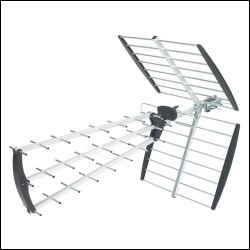
I tested the original wideband version which has been superseded in some cases by a T group with supposed 4G rejection. In my experience, this is never as effective as using a decent filter and furthermore usually lowers the gain at the top end of the aerial, see adjacent graphic.
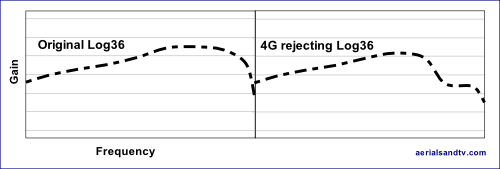
Against the SAC MUX Magician I compared a DY14WB, an XB10K, an XB16K, a Yagi 18A and an XB16A. Technically the DY14WB is the only directly comparable aerial (being the same group) but after the 700MHz clearance the two K groups are effectively widebands. The inclusion of the two A group aerials is to highlight the low gain of widebands in the A group. Remember Crystal Palace and Rowridge (amongst others) have always been A groups but after the aforementioned 700MHz clearance quite a few other transmitters are now also A groups including Winter Hill, Belmont & Waltham. Some other transmitters - including Sandy and Mendip - have 5 (of the 6) MUXES in the A group. But remember, using an A group aerial (as opposed to a wideband or K group) only matters for those in poor signal areas !
Anyway the results are below in summary form (full results at the foot of the page). As is usual all aerials are compared to a DM Log aerial, which has gain of between 6 and 7dBd, thus, for example, a Yagi 18A has an approximate average gain (in the A group) of about 11.5dBd, the MUX Magician would be about 3.5dB lower (at around 8.0dBd).
NOTE : we are quoting dBd not the (disingenuous) dBi.
Interestingly an SLX / Philex “Bacofoil aerial” actually gives slightly more gain than this supposed “ultra high gain” tri boom aerial…..
Having said all the above, 90% of RF reception is down to the signal strength at the site. The fact the MUX MAGICIAN is in last place in the “gain league” would not matter at most sites, though one has to ask the question why put up with much greater wind loading (from your aerial) if you’re not actually getting more gain !
Gain test summary table of results (full results at bottom of page)

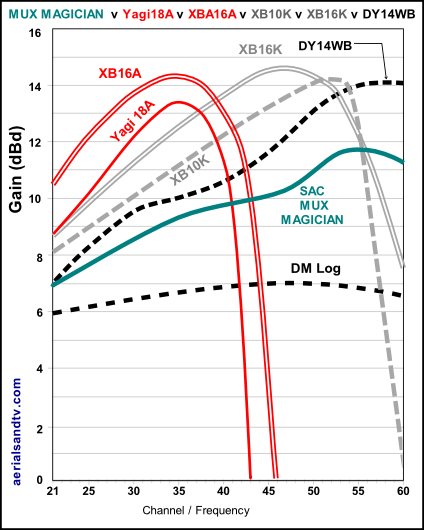
Mux Magician tri boom aerial on test against :
a Yagi18A
an XB16A
an XB10K
an XB16K
and a DY14WB
Note : Our test actually agrees with the manufactures specification of the aerial's peak gain. They variously claim 14 to 15dBi, but that's just under 12 to 13dBd, i.e. more or less what we measured ! See dishonest dBi.
Of course it’s not just about gain, it’s also about build quality and wind loading, the latter putting extra stress on your poles and brackets etc. So long as one’s installation hardware is sufficiently robust then high windloading can be overcome but, all things being equal, it’s better to have less wind loading, particularly if the aerial is mounted on a long pole ! Tri booms, unfortunately have a particularly high wind load, I estimate about 150N (at 80mph), that’s about twice that of a Yagi18 and 25N more than the biggest aerial we sell, the XB16 ! Furthermore this type of Tri Boom are end mounted which puts a large twisting force on the pole, thus the use of saddles is recommended especially in exposed locations, particularly if installed on a cranked pole.
Build quality wise the story is mixed, generally the directors are reasonably strong, stronger than cheapo “Baco Foil” type X Beams anyway. But some models have rather flimsy clamps, beware of those which just tap the thread out in the clamp pressing.
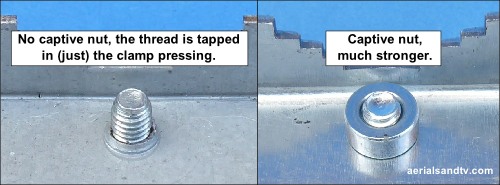
Some of these Tri Booms also have rather weak reflectors because only the top and bottom elements are actually rivetted in, watch for that.
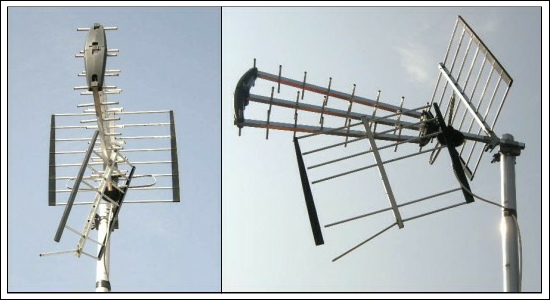
So, we have mediocre gain (particularly with the number of elements used), high wind loading, end mounted (handy for some installs I grant), and, dependent on model, build quality problems. To be frank, I think all Tri-Booms are a bit of a sales gimmick anyway, and these more than most.
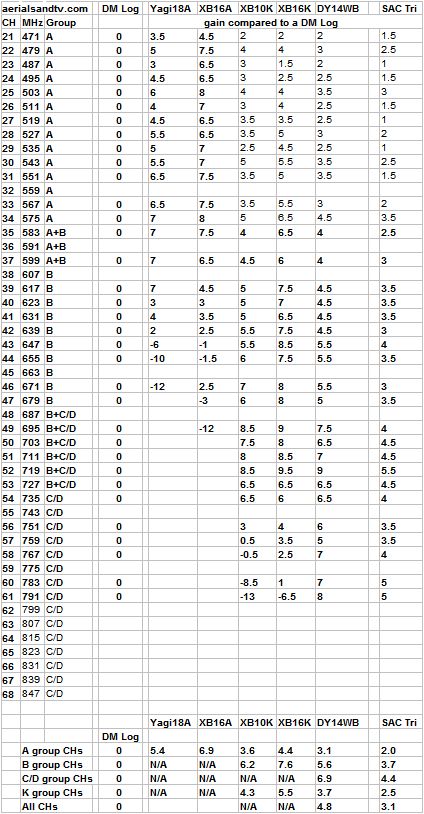
Full results of aerial gain test :
SAC MUX Magician "economy Triboom"
v
Yagi18A
v
XB16A
v
XB10K
v
XB16K
v
DY14WB

